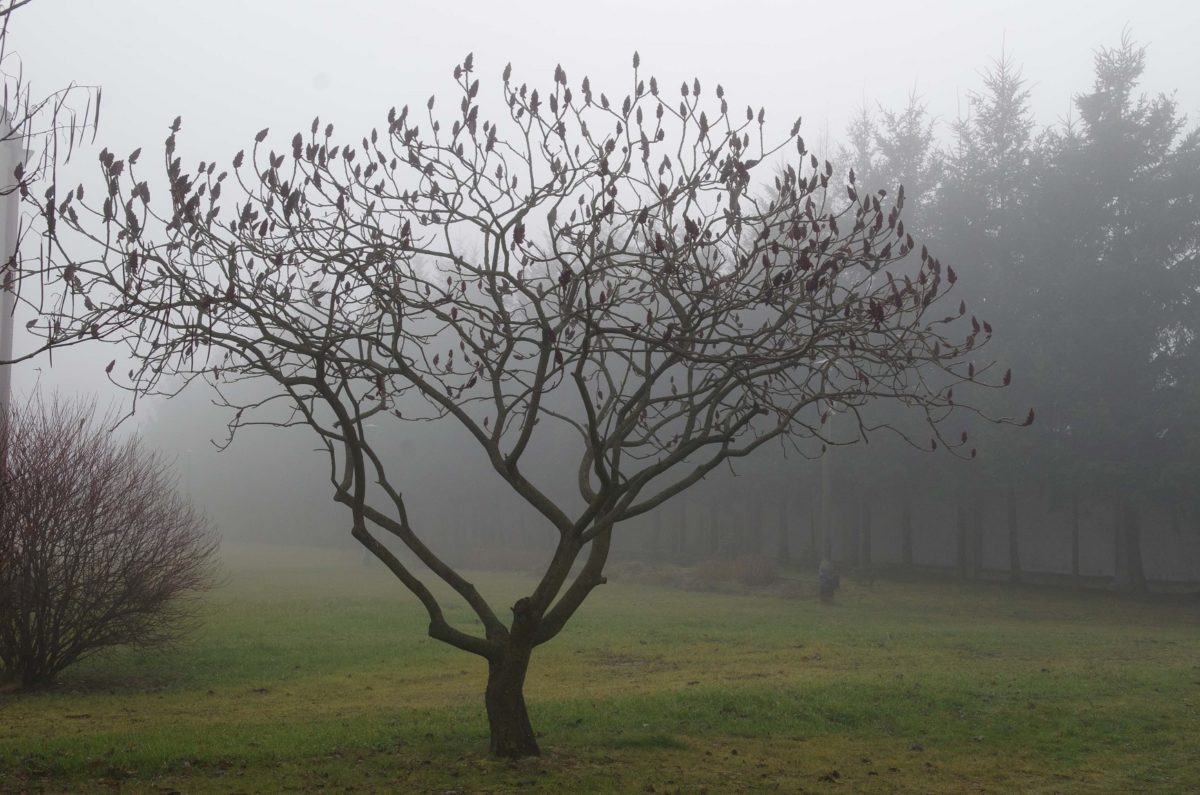Sunday afternoon, my husband and a friend of ours planned to go to the movies. Luckily for us, there was only one seat left. We were forced to move on to Plan B – and, oh my goodness, Plan B turned into quite an adventure.
We had read that there was an exhibit of Arthur Fink’s photos from his visit to Auschwitz and Birkenau at the Maine Jewish Museum. We hopped into the car and were on our way.
Words cannot convey the power of Arthur’s photos. He selected 21 photos for this exhibit titled Auschwitz: Images of Resilience and Light. The photos reflect Arthur’s (successful) attempt to share images “that suggest hope, possibility, and positive vision.” The photos in the exhibit include:
A barbed wire fence
Tracks leading to Birkenau
Barracks at Birkenau
Children’s shoes
A picture drawn by an adult that included text that when roughly translated means “I love you, children.”
The photo accompanying this post is titled Tree of Life which Arthur believes is “a symbol of vibrant new growth that can arise even in this shadow of the Holocaust . . . a fitting end to an exhibition in a synagogue whose name, ‘Etz Chaim’, means ‘Tree of Life.’
Each of these sobering images meets Arthur’s belief of suggesting hope, possibility, and positive vision. These images – individually and collectively – tell the story of the unimaginable and dare us to do better, be better, and honor those whose lives were turned upside down – both the survivors and those who lost their lives in the Holocaust.
From the moment we set foot in the museum, conversations were brewing. There was a buzz throughout the museum. Jack Montgomery’s work was also a featured exhibit titled Soul Survivors: Legacy of the Holocaust. Jack’s exhibit included portraits of Holocaust survivors who settled in Maine along with excerpts of their oral testimonies. These powerful stories were a perfect complement to Arthur’s images.
As we viewed photos and read the stories of Holocaust survivors, VOICES Boston performed a variety of songs that served to lighten the mood and foster conversation – serving another of Arthur’s goals: “these images and whatever conversations they stimulate, will help viewers explore together how we can create a constructive personal relation with the Holocaust.”
Conversation is powerful; and Arthur encourages people to ask questions, even difficult questions – okay, perhaps especially difficult questions. Conversation connects us; conversation gives us the opportunity to confirm the accuracy (or inaccuracy) of our understanding of a situation. Conversation lets us find common ground and explore our differences.
Arthur and Jack’s exhibits explore a heavy subject and show us that after unspeakable sorrow and tragedy, hope remains. Hope lives in each of us; we just need to decide what action we will take so that hope remains meaningful. The museum’s decision to bring the talented VOICES Boston program to the museum was a wise one. The youthful voices of the members of the chorus radiated warmth and hope throughout the building.
Lessons from taking our Plan B route to the Maine Jewish Museum:
Look at the past.
Let the past guide or influence your future.
Do not let the past dictate your future.
Ask questions.
Ask simple questions.
Ask difficult questions.
Have an uncomfortable discussion.
Keep your discussions civil.
Where there is hope, there is a possibility for a brighter tomorrow.
There is always hope.
Living well takes many forms. Taking the time to explore a museum, listen to music, walk through your town, or explore a new area encourages looking at the world through a new lens.
Thank you, Arthur, for sharing these images and for reminding us of the power of hope.





